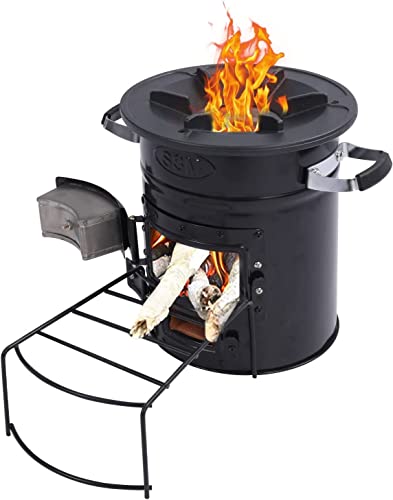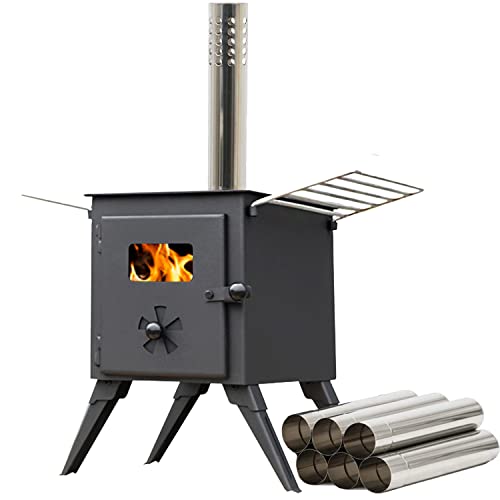Guide To Wood Burning Fireplace: The Intermediate Guide Towards Wood B…
페이지 정보
작성자 Cecil 작성일24-11-24 14:56 조회6회 댓글0건본문
 Maintaining a Wood Burning Fireplace
Maintaining a Wood Burning FireplaceNothing warms a home like the roar of a wood burning fireplace. If you have one, it is important to maintain it regularly to prevent the risk of creosote accumulating in dangerous amounts.
Airflow can be controlled with a damper which is a vital part of maintaining a high-quality combustion. The type of firewood used can be a factor in the way that hardwoods such as oak and ash producing less creosote than softwoods.
Energy Efficiency
Wood fireplaces can be a beautiful design, generating a warm and cozy environment. However, they are not efficient in energy use and can result in harmful air pollution if they aren't properly maintained. The kind of wood used the quality and condition of the firebox, the chimney installation and chimney can greatly affect the efficiency of the unit.
Firewood is the primary fuel source for wood-burning stoves. It is usually purchased in face cords or full cords (measured as 4'x8"x8") Before using firewood, it must be "seasoned" in order to decrease the amount of water in it and increase its energy density. If the wood is moist it won't burn effectively and will produce a lot of creosote. Seasoning wood can last for months or even a full year, depending on weather and climate conditions.
wood burning stoves on sale burning fireplaces require a significant investment of time and money to maintain them correctly. In addition to purchasing large quantities of firewood, homeowners must regularly check and clean their fireplace. This is to ensure that the chimney is clear of obstructions, that it is operating well, and that there is there is no combustible material near the fireplace. Regular cleaning and inspections can reduce the risk of fires in chimneys and room fires.
Smoke from a wood-burning fireplace is a source of fine particle pollution which can cause lung damage and cause serious health issues, including lung disease, cardiovascular disease and heart attacks. It also releases carbon monoxide as well as other toxic air pollutants like volatile organic compounds nitrogen oxides, benzene and formaldehyde. small wood burning stove smoke is a contributor to the depletion of ozone in the atmosphere and greenhouse gases, as well as other pollutants that can alter the climate of the earth.
small wood burning stoves for sale stoves that are EPA-certified efficient use an additional combustion process to reduce the generation of harmful emissions during the firing. To maximize performance the stoves need an appropriately sized chimney as well as the installation of a flue lined. It is essential to use seasoned wood and to avoid adding accelerants to the fire, such as lighter liquid, gasoline or butane torch. This can cause overheated fire, creating a risky situation. To prevent termite invasion homeowners should also keep their firewood in a safe location away from their homes.
 Cleanliness
CleanlinessWood-burning fire places are a fantastic alternative to other heating methods. They also create a relaxing atmosphere. They can be used as primary or supplementary heat sources and could be eligible for tax credits. They can be messy, and require regular cleaning to avoid soot and creosote buildup. A fireplace that is dirty can release harmful odors and toxic substances that can impact the air quality inside your home.
The most important thing to remember when burning a wood fireplace is to make use of dry firewood. Kiln dried firewood can help reduce creosote and soot buildup. Kiln dried firewood can be treated in a heated oven or kiln to remove all of its moisture content. It is also a good idea to only burn clean, seasoned (burned) wood that is split and placed in a stack for a couple of months prior to use.
Before you start a fire sweep up ash from the floor of the fireplace and around the smoke shelf and grate. Make sure the ashes are cool before placing them in an aluminum waste bin for disposal. Utilizing an empty pan or a whisk broom as well as sweeping and dumping any other debris that has accumulated outside the fireplace.
When cleaning a fireplace, make sure to wear gloves and an apron in order to protect yourself from the dirt and soot produced. It is important to clear a work space and cover any adjacent furniture with drop cloths to guard against staining. Wear a dust mask so you don't breathe in any particles of soot or ash.
Start by filling a large bucket with one gallon of warm water. Add 3.8 tablespoons of trisodium phosphate (TSP), 1 cup of bleach and 2 tablespoons of household ammonia. Mix the mixture well, and then use a nylon brush to scrub the fireplace's walls and the surrounding areas. After you have scrubbed the walls and the surrounding areas of your fireplace, clean it off with a clean, damp cloth.
Repeat the scrubbing, rinsing and wiping until all visible deposits are cleared from your fireplace. Once you're satisfied with your cleanness you can employ a glass cleaner that is safe for wood-burning stoves to clean the glass doors.
Aesthetics
small wood burning stove for shed fireplaces are beautiful and are not comparable to modern propane or gas fireplaces. Their rustic appearance, the crackling sound of a burning fire and their cozy ambience provide a warm and inviting atmosphere that has long stood the test of time. Many people seek this feature when buying a fireplace.
While wood-burning fireplaces are great for heat however, they also release harmful gases into your home. These include carbon monoxide and smoke that could cause lung damage. While the fireplaces are usually well-ventilated, it's important to have an effective system in place that can help get rid of these toxins. This is why many people prefer using a zero clearance wood burning fireplace (Going in Proect) which helps to lower the amount of harmful gases in your home.
There are a variety of ways to design your fireplace to make it more unique and attractive. You can paint it to match the style of your living room or use reclaimed wooden to give it a more rustic look. You can also include an uphill stone staircase to the fireplace. This will create a functional and fun feature for your home.
You can also alter the color of your chimney. A popular choice is black, which looks stunning and matches most homes. Another option is to paint your fireplace in white, which opens up the room and creates a bright and airy space. Gray is a third option that is compatible with many different styles and is a contemporary trend. Some homeowners even mix beige and gray together and call it greige to celebrate this flexibility and aesthetic.
The best woodburning stove way to make a fireplace look less old fashioned or obtrusive is to paint it to match the walls around it. This can be done in a deep neutral that is on-trend, like grey, or a warm and earthy tone such as brick or terracotta red. The idea is to create a unified space that does not draw attention to itself, but rather blends in with the rest of the room. If you are unsure about which colour to go for, you can always ask a professional for advice.
Safety
Wood burning fireplaces can create serious safety issues if not properly maintained and operated. They emit fine particle pollution that can enter deep into the lungs and trigger lung diseases. They also release harmful air pollutants, such as carbon monoxide and volatile organic compounds. Wood smoke also contributes to climate change by releasing carbon dioxide and methane.
The flue of a wood stove should be inspected and cleaned regularly to ensure it is functioning properly. A clean and functioning chimney flue can keep carbon monoxide from leaking into the air and chimney fires.
If the flue liner is getting worn out the flue liner should be replaced or repaired immediately. It is also crucial to keep combustible materials away from the wood stove, which includes drapes, curtains and other flammable objects. Cross-ventilation is an excellent method to circulate warm air around the home to ensure that it doesn't end up back up the chimney.
Ashes should be swept out of the fireplace frequently to prevent them from building up too deep and obstructing air flow. The accumulation of ash will decrease the oxygen supply for logs, which will reduce the efficiency of combustion and resulting in more smoke. The ashes must be kept in a metal bucket or other noncombustible container.
Children should be kept away from the area around the fireplace especially when it has an open glass front. They can get burns if they touch the hot surfaces after and during the fire. In addition, the different tools employed to maintain a fireplace, like pokers, log lifers, and shovels, are hazardous for children to handle. A three-foot "safety zone" must be set up around the fireplace to prevent children coming in contact with it.
Installing an alarm for carbon monoxide and detector in the house is also a great idea especially if you have a wood stove. Carbon monoxide is a hazard when the chimney and wood stove aren't operating properly, and is harmful to breathe.
It is also important to verify the state, local, and tribal regulations regarding wood burning fireplaces. These regulations might include nuisance/odor rules, "no-burn" days and visible emissions or opacity limits on the smoke that is emitted from chimneys of homeowners. These laws are often designed to reduce air pollution and protect the public's health.
댓글목록
등록된 댓글이 없습니다.





